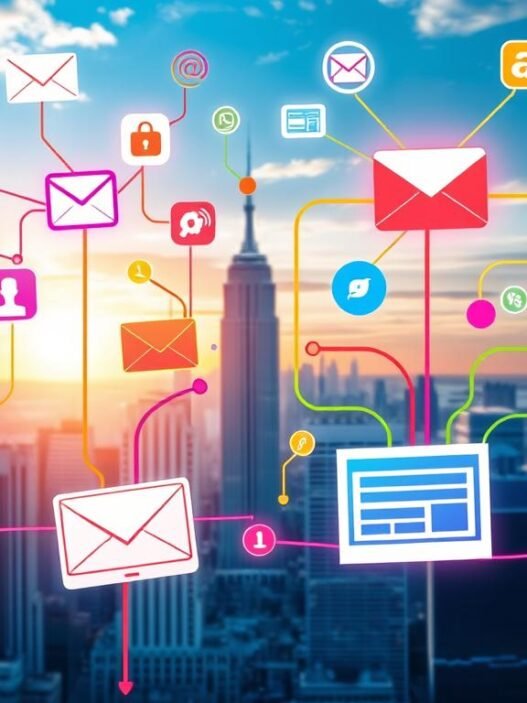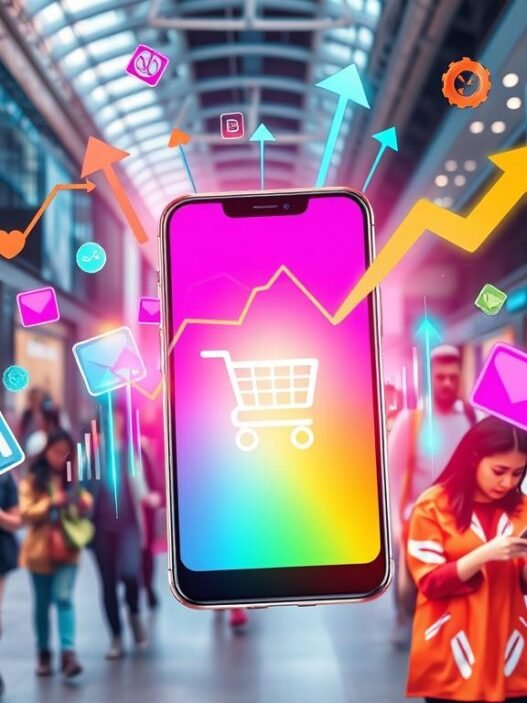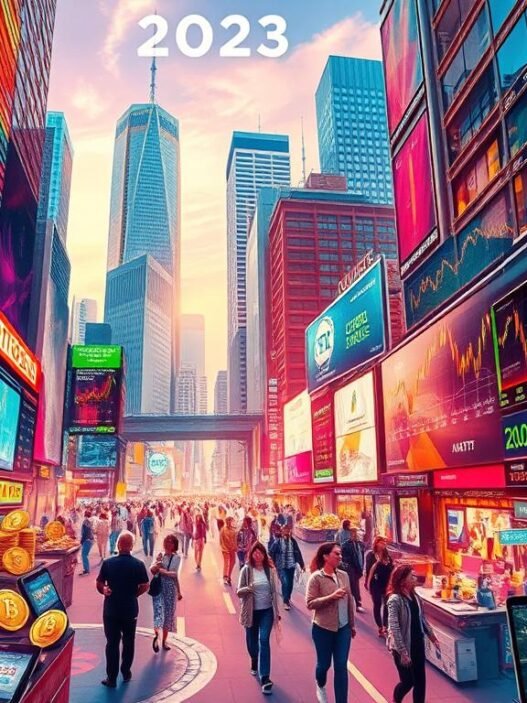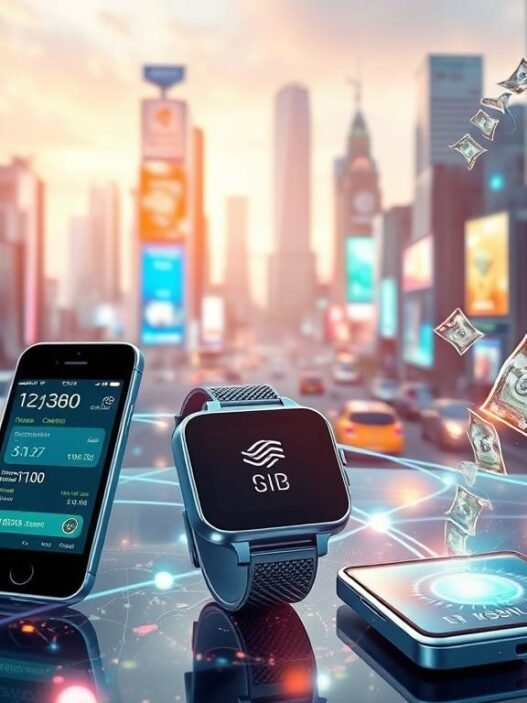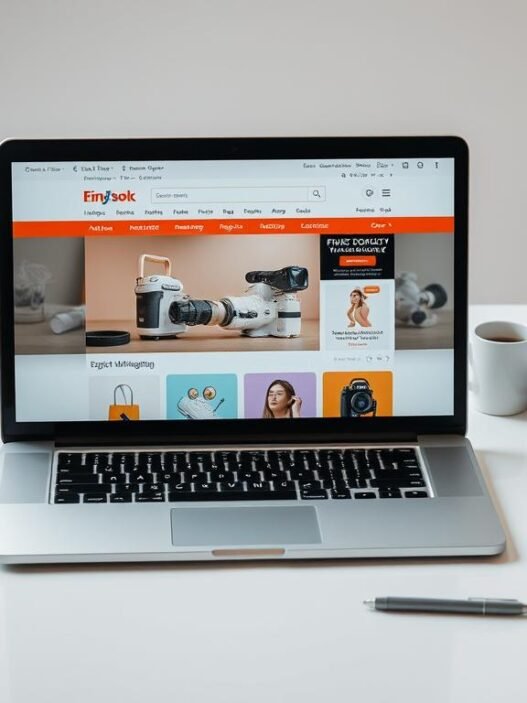Did you know companies with strong brand loyalty grow 2.5 times faster than others? This shows how important brand loyalty is for success. It’s all about making a deep emotional connection with customers. This article will explore the world of brand loyalty, its importance, and how to make it better.
Understanding how customers behave is key for brands to succeed today1. Building strong connections with customers leads to lasting growth and a better market position.
Learn more about brand loyalty and its role in business
Key Takeaways
- Brand loyalty greatly boosts revenue growth.
- Emotional bonds between brands and customers are crucial.
- Polygamous loyalty shows consumers choose a few favorite brands.
- Experiences beyond buying improve brand memory.
- Unique identity and stories help brands stand out.
The Importance of Brand Loyalty
Brand loyalty is key in today’s market. Companies that connect with customers emotionally gain big advantages. This leads to better customer retention and success over time. Trust is vital in this bond, making loyal customers more understanding of mistakes.
This loyalty brings real benefits. It helps businesses stay strong and profitable in the market.
Why Brand Loyalty Matters to Businesses
Building loyalty gives a lasting edge. Customers who feel a bond with a brand often recommend it. This leads to higher retention and less chance of switching to others.
Keeping loyal customers is cheaper than getting new ones. In fact, it’s up to 25 times cheaper2. Brands like Coca-Cola and Apple have seen this, enjoying steady income and market stability3.
Key Benefits of Cultivating Brand Loyalty
Brand loyalty offers more than just sales. Loyal customers buy more often. They are also more likely to trust and recommend a brand2.
They tend to spend more, boosting revenue. Plus, they help bring in new customers. Companies that focus on customer experience see loyalty and sales go up3.
| Benefit | Description |
|---|---|
| Increased Customer Trust | Loyal customers trust brands that deliver on promises, leading to recurring purchases. |
| Effective Word-of-Mouth Marketing | Loyal customers actively recommend brands to peers, enhancing brand visibility. |
| More Forgiving Customers | Loyal customers are more likely to overlook mishaps, allowing a business to recover from setbacks. |
| Higher Growth Rates | Retention leads to a virtuous cycle of growth, making brand loyalty a key driver of profitability. |
Understanding Consumer Behavior
Knowing how consumers behave is key to building brand loyalty. It’s all about the emotional bonds that shape their choices. When people feel a brand matches their values, they tend to stick with it. This emotional tie can make them strong advocates for the brand4
Emotional Connections and Buying Decisions
Today, emotions play a big role in what we buy. Brands must connect with us on a deeper level, not just offer products. When we feel a strong bond, we become loyal and want to share our love for the brand4.
Looking into why we buy things can help marketers create better ads. Knowing what drives our emotions helps brands make ads that speak to us5.
Polygamous Loyalty: A New Perspective
Now, people often choose to be loyal to more than one brand in a category. This shows brands need to offer unique, emotional experiences. As tastes change, brands must keep up by understanding their audience’s varied needs5.
Brands that make us feel at home are more likely to keep us coming back. By grasping polygamous loyalty, brands can craft strategies that keep them top of mind5.
Key Drivers of Brand Loyalty
Several key factors shape brand loyalty. These include the quality of customer experience, trust, and transparency. Understanding these can help brands build strong connections with consumers, leading to lasting relationships.
Customer Experience and Satisfaction
Great customer experience is key to loyalty. When customers feel valued and receive top-notch service, they’re happy. In fact, 89% of people are more likely to come back if they have a good experience6.
Repeat customers spend 67% more over three years than new ones. This shows how important memorable interactions are6. Also, making interactions easy boosts positive feelings toward a brand7.
The Role of Trust and Transparency
Trust is vital for loyalty. Over 80% of consumers look for trust when buying, showing brands must be honest6. Being open about values and operations builds trust and loyalty. Brands that communicate well and are dependable, like Apple and Amazon, lead in customer satisfaction7.
| Driver | Impact on Loyalty | Supporting Data |
|---|---|---|
| Customer Experience | Crucial for repeat business | 89% prefer positive experiences6 |
| Trust | Foundational for brand commitment | 80% consider trust in decisions6 |
| Transparency | Enhances consumer confidence | Evident in leading brands7 |
| Effort Reduction | Creates smoother interactions | Enhances emotional connection7 |
Strategies to Enhance Brand Loyalty
Building brand loyalty is key for businesses to stand out. They must create memorable experiences, tell compelling stories, and use customer feedback to get better. These steps help build strong relationships with customers.
Creating Memorable Customer Experiences
Turning one-time buyers into loyal fans is possible. Brands can do this by focusing on every interaction. The 2023 State of Social Media Report shows that building a strong brand reputation is top priority for leaders8.
Companies like Starbucks use rewards to keep customers coming back. They offer discounts and perks through their Rewards Card8. Giving surprises can also make customers feel valued, boosting loyalty9.
Implementing Effective Storytelling Techniques
Storytelling is a powerful tool for brands. It helps share their values and products in a way that connects with people. Gymshark, for example, keeps its brand voice consistent, making it relatable and emotional8.
Brands that give back to society also win loyalty. People want to support brands that share their values10.
Utilizing Customer Feedback for Improvement
Listening to customers is crucial for loyalty. It shows they matter. Companies that focus on experience over sales build stronger loyalty9.
Studies show that those who prioritize customer experience grow revenue faster8. Regularly checking in and personalizing marketing helps keep customers engaged for the long haul10.

| Strategy | Key Actions | Expected Outcomes |
|---|---|---|
| Memorable Experiences | Personalized interactions, rewards programs | Increased customer retention |
| Storytelling | Consistent brand narrative, social responsibility | Deeper emotional connections |
| Customer Feedback | Regular surveys, implementing suggestions | Improved customer satisfaction |
Brand Loyalty in a Competitive Market
In today’s crowded market, building strong brand loyalty is crucial. Companies must stand out by creating a unique brand identity and visuals. This way, they can form deep connections with customers, leading to more sales and loyalty.
How to Stand Out Among Competitors
Brands need to have their own marketing strategies to succeed. Those with strong brand loyalty see their revenues grow 2.5 times faster than others11. Using loyalty programs can also boost repeat business, with loyal customers 5 times more likely to buy again12.
Creating emotional connections through branding is key in a competitive market.
Leveraging Unique Brand Identity and Visuals
A compelling brand identity is essential for long-term success. Being consistent in brand messaging helps make a brand recognizable13. In fact, 84% of consumers prefer to stay with a brand that offers loyalty programs12.
So, companies should innovate in their branding to connect with customers and build loyalty.
| Statistic | Impact |
|---|---|
| Companies with high brand loyalty grow revenues 2.5 times faster. | Increased profitability and market share. |
| Brand loyal customers spend 67% more than new customers. | Enhanced revenue from existing clientele. |
| 73% of customers consider brand loyalty when purchasing. | Indicates the importance of fostering loyalty to drive sales. |
| 74% of consumers say consistent product quality keeps them loyal. | Quality assurance as a key to retaining customers. |
| 25% of Gen-Z and Millennial consumers spend more on socially responsible brands. | Need for brands to demonstrate corporate social responsibility. |
Measuring Brand Loyalty
Measuring brand loyalty is key for staying ahead in the market. Companies need clear Key Performance Indicators (KPIs) to see how customers behave and feel. These metrics show if a brand meets customer needs and builds strong relationships.
Understanding Key Performance Indicators (KPIs)
KPIs for brand loyalty include Net Promoter Scores. They show how happy customers are and if they’d recommend the brand14. Customer satisfaction scores also matter, showing if the brand meets customer needs15. By tracking these, brands can change their strategies to keep up with their audience.
Assessing Customer Retention Rates
Customer retention rates are crucial for brand loyalty. They show how well a brand keeps customers coming back. Brands with high retention rates see more spending and advocacy from customers16.
Using consecutive repeat rates can predict future market share. It shows how fast customers return to buy15. Regular surveys help brands keep track of these metrics and adjust as needed14.

Brand Loyalty vs. Customer Loyalty
It’s key for businesses to understand the differences in loyalty to build a loyal customer base. Brand loyalty is about the emotional bond and commitment to a brand. On the other hand, customer loyalty might be based on short-term offers like discounts. Knowing these differences in loyalty helps companies create stronger bonds with their audience.
The Differences and Intersections
Brand loyalty and customer loyalty share some similarities but show in different ways. Loyal customers often stick with familiar brands, even if they cost more. Studies show that keeping existing customers is much cheaper than getting new ones, making loyalty strategies crucial17. Also, loyal customers buy fewer items but make more profit on those items17.
Long-Term Benefits of Fostering Brand Loyalty
Building brand loyalty brings many benefits. It creates a strong client base that can handle competition and economic changes. Starbucks, for example, has over 29 million active members in their rewards program, making up half of their sales18. When customers feel a strong connection to a brand, their value to the company can grow a lot, showing loyalty’s importance17.
Case Studies of Successful Brands
Companies like Apple and Amazon stand out in today’s crowded market. Apple builds lifelong loyalty by creating a tight-knit ecosystem. This makes users feel they belong, boosting retention and repeat sales.
Apple’s focus on community helps keep customers coming back. This shows how emotional bonds can create lasting loyalty.
How Apple Cultivates Lifelong Loyalty
Apple knows emotional connections are key. They offer more than just products; they create a community. This keeps their loyal customer base strong.
Apple’s innovative services and exclusive launches keep things fresh. This ensures customers stay loyal to the Apple family19.
Lessons from Amazon’s Customer Engagement Strategies
Amazon also excels in building loyalty, especially with its Prime program. It offers many perks that add value over time. This keeps subscribers happy and loyal20.
Amazon’s seamless integration of benefits makes every interaction valuable. This strengthens loyalty and meets customers’ changing needs21. Discover more about building loyalty here.











